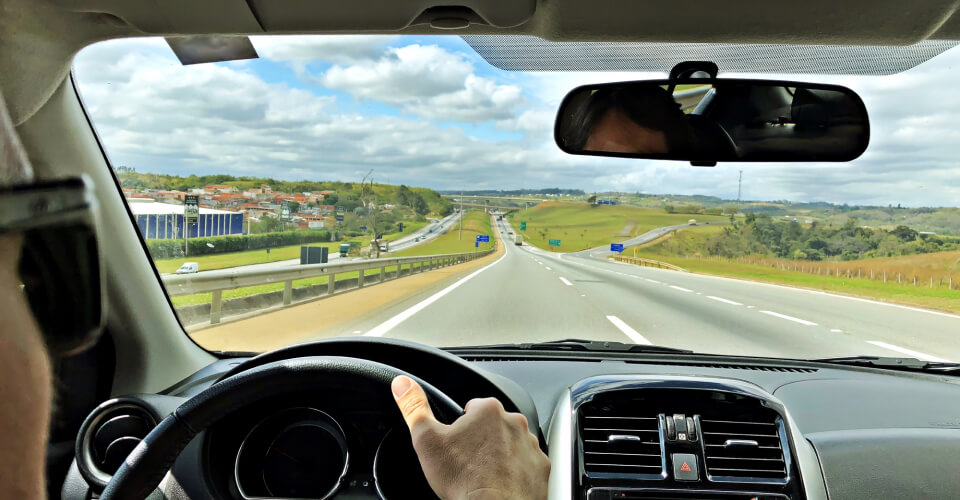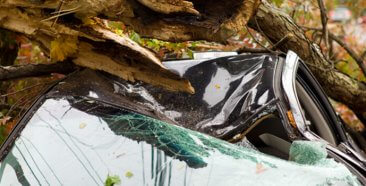
Maintaining a vehicle to keep it safe on the road can be costly, especially if you drive a lot. Aside from the possible automotive recalls involving faulty airbags, ignition switches, and other components prone to failure, do you know if your car is mechanically safe to drive on highways? If not, are you willing to risk your safety and higher auto insurance premiums by getting into an accident because of poor maintenance or dangerous neglect? Better to be safe! Get to know the factors that make up a vehicle safety checklist so you can apply it before your next trip.
When you cruise along the highway at speeds of 75, 80, and 85 miles per hour you better hope your car or truck is in the proper mechanical condition. Bad things can happen in the blink of an eye that could be devastating to you, your family, or an innocent driver heading in the opposite direction.
Even the smallest safety issue could make you lose control. Fortunately, there are ways you can reduce your risk of causing yourself or others harm. That’s exactly why a vehicle safety checklist should be considered before you hit the road. But first, we need to familiarize ourselves with specific terms.
What Is A Vehicle Safety Inspection?
This is a process in which a qualified mechanic or technician inspects a vehicle to ensure that it is in compliance with various safety regulations and standards. It typically includes a comprehensive examination of its key components, such as the brakes, tires, lights, steering, suspension, and emissions systems. The purpose is to ensure that the car in question is safe to operate on public roads and highways, and to identify any potential safety hazards that could lead to accidents or breakdowns.
In many jurisdictions, vehicle safety inspections are mandatory and are required by law before a car can be registered or licensed. A passing inspection is generally required to obtain or renew a registration or license, while a failed one may require the owner to repair or replace certain components before the automobile can be deemed safe to operate on public roads.
Where Does a Checklist Come In?
While an inspection is a technical requirement and official process to go through, having a checklist can fall more on the car owner’s side. Think of it as the guide you must follow between your yearly check with the mechanic. It can help you detect minor problems before they become major and costly repairs. Knowing what to look out for before it’s too late is half the battle and saves you a lot of trouble down the line, like getting stranded on the side of the road.
What Is Included in a Vehicle Safety Checklist?
An inspection involves a thorough examination of various components and systems to ensure that they meet minimum safety standards. The inspector may also look for signs of damage, wear and tear or any other issues that may compromise the safety and performance of the vehicle.
We will build our checklist with the components addressed so it better aligns with official guidelines. Get awareness and reduce risk while on the road with this criteria.
Tires
Tires are at the top of the list because you can’t go from Point A to Point B without them, and they also happen to be the most important factor when it comes to safety. Tires that are worn, misaligned, improperly balanced or under inflated can compromise your steering’s effectiveness.
Furthermore, worn and under inflated tires can lead to a dangerous blowout. At high speeds handling can become erratic, resulting in an unexpected rollover accident. So check the tire pressure regularly and take a peek at the tread depth from time to time. If they get beyond the state’s minimum tread depth for safety, it’s time to replace them. Should the tires appear to be wearing unevenly, have them balanced and align the front wheels. Tire care is definitely among your highest priorities.
Brakes
You really don’t want to ignore worn brakes either. When brakes wear out, they can cause the car, truck or motorcycle to pull to one side or the other. A panic stop while speeding at 85 mph could be catastrophic. The biggest problem with worn brakes is that, eventually, they’ll make it more difficult to stop your vehicle, requiring more braking distance and resulting in a potential accident.
Have your brakes inspected when rotating your tires or having the oil changed. Also, if you notice brake fade, difficulty in stopping or unusual noises when applying the brakes, have them checked out immediately. Don’t forget to also test your emergency brake.
Lights
Your lights play an important part in your safety, especially at night. They not only allow you to see what’s ahead of you on the highway, but they also let other drivers know of your presence on the road. They can also protect you from being slammed into from behind by another car, as well as indicate your next move when using your turn signals, which is crucial for preventing accidents.
Here’s the lights you should take into account:
- Headlights
- Taillights
- Hazard lights
- Turn signal
- License plate lights
- Brake lights
Periodically check all your lights and replace the burned out ones as needed.
Fluid Levels
Your vehicle’s fluid levels are not only vital to the life of the engine, but to yours as well. The engine relies on the oil to be at proper levels and clean to keep running right. Rule of thumb is – change the oil every 3,000 to 5,000 miles as recommended by your auto maker.
Here’s a quick rundown of how the different fluids in your car help you drive safely:
- Brake fluid: Its importance goes without saying. Keeping it at the maximum level will permit you to stop your vehicle when needed.
- Transmission fluid: It needs to be clean and at the levels required to help the engine shift gears as you accelerate.
- Power steering fluid: Your ability to turn and steer effectively depends on it. Without it being full, squealing will be heard, not to mention making it possibly difficult to control the car.
- Radiator coolant: It maintains a safe engine temperature. A low or seriously insufficient amount of coolant can cause the engine to overheat. You probably also know it as antifreeze.
Check all fluid levels regularly to avoid unnecessary expenses.
Hoses and Belts
Aside from fluid levels, hoses and belts are probably the least checked components under the hood. Belts can wear and break, while hoses can crack and leak. Over time, like any other part, they wear out and need replacement. The idea is to catch them before they take a nasty turn, which can happen anytime. However, with regular inspection you might notice the fraying of a belt or a possible leaky hose. Changing them isn’t always cheap, but it’s a lot cheaper than replacing them once other damage has been done to the engine.
Mirrors
Most drivers take mirrors for granted, while some hardly use them, relying on luck more than anything else. If your rearview and side view mirrors aren’t properly positioned to see other vehicles behind and on your sides, you can easily change lanes into another car. An always useful tip: use your rearview mirror when backing up, as well as turning your head.
Windshield and windows
This is one of the easiest elements to inspect: it’s right in front of you! A cracked windshield can start with a small chip, but it can expand and turn complicated with time. If your vision is impaired, a replacement should be done quickly. This includes your windshield wipers. Being able to clean your window at the exact time that you need it can save both visibility and frustration. Be sure to check your rear and side windows as well. It all counts.
Horn
You never realize how important a safety feature a horn can be until an incident requires you to use it and it doesn’t work. Letting others know you’re there if they start drifting or merging into your lane can make the difference between avoiding an accident and getting into one.
Always Be Prepared with Freeway Insurance
While you can’t prevent all automobile accidents, maintaining your vehicle’s fitness for the road can help reduce your chance of injury from a crash caused by mechanical neglect. By ensuring that your car is in good working order, you help to minimize the risk of accidents and protect both drivers and passengers on the road. Prevention is always a good idea.
Be prepared, but don’t overpay for your car insurance. Call Freeway Insurance today at (800) 777-5620 to speak with a live agent who can go over all of your options with you. Freeway specializes in providing quality insurance for all drivers, no matter their budget. Call today or get your affordable auto insurance quote online. Or if you prefer, visit any of our offices!


